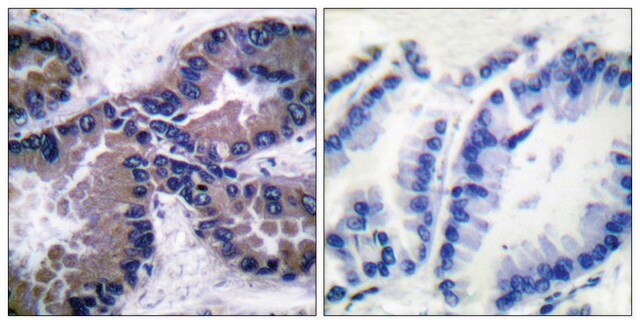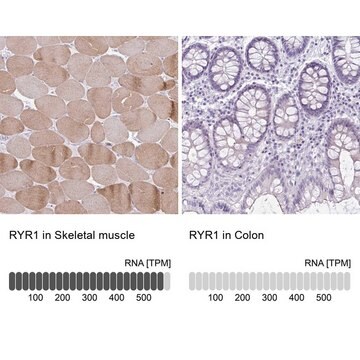R129
Monoclonal Anti-Ryanodine Receptor antibody produced in mouse
clone 34C, ascites fluid
别名:
Anti-CCO, Anti-KDS, Anti-MHS, Anti-MHS1, Anti-PPP1R137, Anti-RYDR, Anti-RYR, Anti-RYR-1, Anti-SKRR
About This Item
IHC (f)
IP
WB
immunohistochemistry (frozen sections): 1:1,000
immunoprecipitation (IP): suitable
western blot: 1:5,000
推荐产品
生物源
mouse
品質等級
共軛
unconjugated
抗體表格
ascites fluid
抗體產品種類
primary antibodies
無性繁殖
34C, monoclonal
分子量
antigen 565 kDa (non-mammalian vertebrates, doublet at 565 kDa representing the α and β isoforms)
物種活性
human, rat, rabbit, canine, mink, bovine, frog, fish, primate, chicken, mouse, sheep
技術
direct immunofluorescence: suitable
immunohistochemistry (frozen sections): 1:1,000
immunoprecipitation (IP): suitable
western blot: 1:5,000
同型
IgG1
UniProt登錄號
運輸包裝
dry ice
儲存溫度
−20°C
目標翻譯後修改
unmodified
基因資訊
human ... RYR1(6261) , RYR2(6262)
mouse ... Ryr1(20190) , Ryr2(20191)
rat ... Ryr1(114207) , Ryr2(84025)
一般說明
免疫原
應用
Western Blotting (1 paper)
外觀
免責聲明
未找到合适的产品?
试试我们的产品选型工具.
儲存類別代碼
10 - Combustible liquids
水污染物質分類(WGK)
nwg
閃點(°F)
Not applicable
閃點(°C)
Not applicable
個人防護裝備
Eyeshields, Gloves, multi-purpose combination respirator cartridge (US)
我们的科学家团队拥有各种研究领域经验,包括生命科学、材料科学、化学合成、色谱、分析及许多其他领域.
联系技术服务部门



